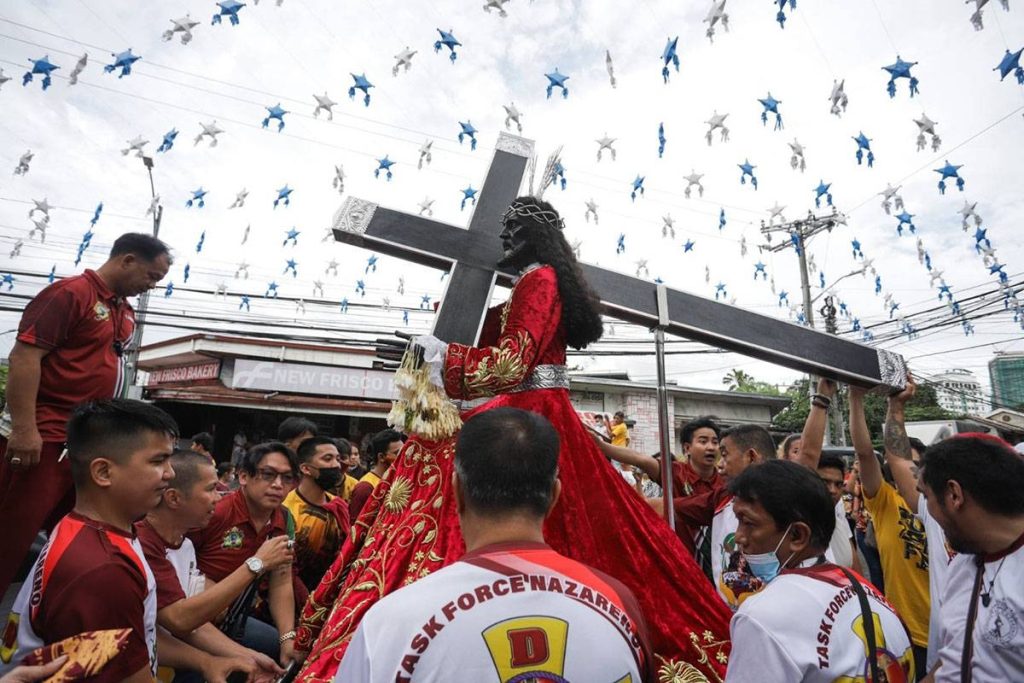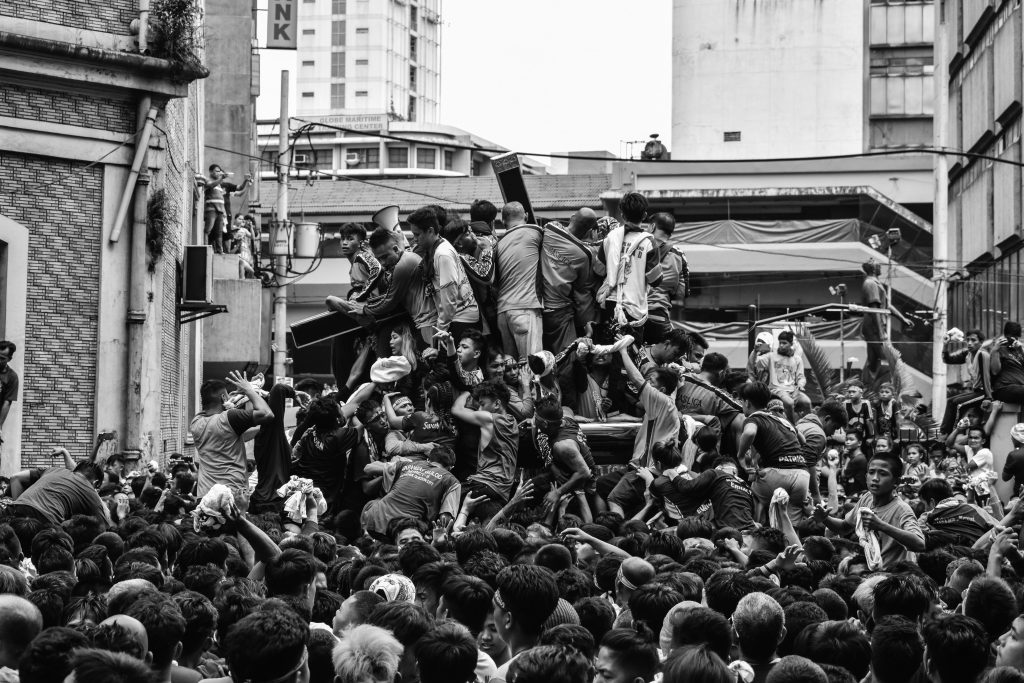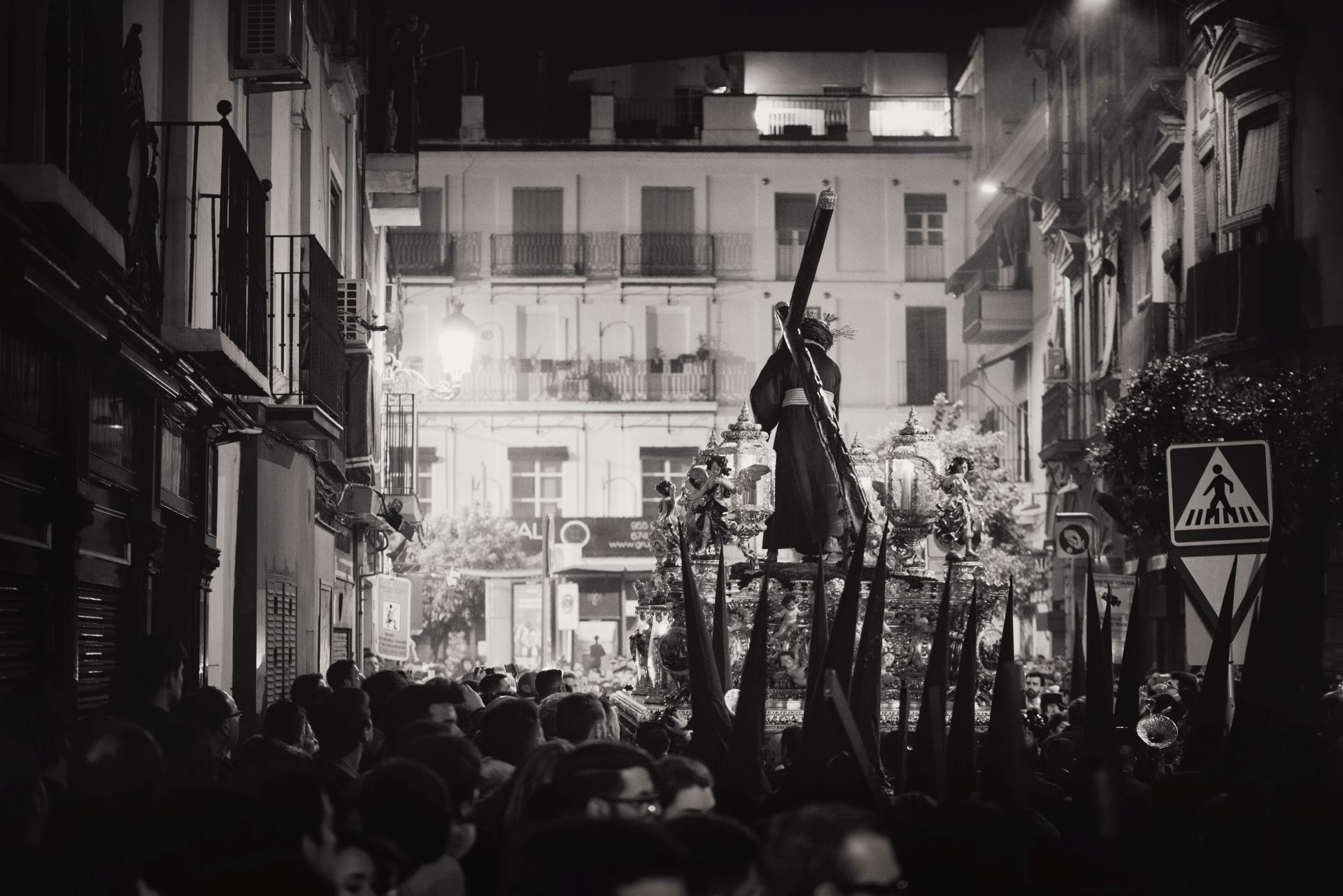Childhood memories often stir up a sense of nostalgia and community spirit in the quiet and serene subdivision in San Pedro, Laguna. Many locals remember joyful moments spent inside their comfortable houses, yet unaware of the dedication to religion that would eventually become a significant aspect of their lives as they have become witnesses to an annual event that draws attention not just locally, but nationwide—the annual Feast of the Black Nazarene.
What is the story of the Black Nazarene?
A life-sized, dark-colored figure of Jesus Christ known as the “Black Nazarene” was transported from Mexico to Manila, Philippines, on May 31, 1606, by the first crew of Augustinian Recollect friars deployed by Spain. A fire that started on the ship when it was sailing from Mexico to Manila left the image scorched black. It also withstood two devastating fires in 1791 and 1929 that demolished the Quiapo Church in Manila. Furthermore, it survived the deadly WWII bombing of Manila in 1945 as well as the severe earthquakes in 1645 and 1863.
The sculpture’s local Mexican culture was represented in the gloomy depiction of Christ. Moreover, St. John the Baptist served as the patron of the first Recoletos church in Bagumbayan, Luneta, where the image of the Black Nazarene was kept. The Black Nazarene is the name given to this work of art.

Image from: https://www.vaticannews.va/
The feast of the Black Nazarene and this remarkable transfer are remembered annually in the Philippines on January 9 with a magnificent procession known as the traslacion or transfer (Minor Basilica of the Black Nazarene 2014).
Why is Jesus called Nazarene?
To put it simply, Jesus is known as “Jesus of Nazareth” or “the Nazarene” as He was raised in the town of Nazareth. But this term also reminds people of all our lowly beginnings and speaks to prophecies that have come true.
What does a Black Nazarene look like?
The Black Nazarene is the image of a dark-skinned Christ wearing a maroon robe, holding a wooden cross on his right shoulder, with a knee on the ground and an agonized expression on his face directed upward. It’s a lone picture, expressionist in style, showing Christ tumbling to the ground as He makes His way to Calvary for crucifixion.
The crown of thorns worn by the figure symbolizes Jesus’s ridicule. From the image’s head, three gold rays known as potencias radiate, signifying the might and divinity of Christ. The figurine contains moveable arms and shoulders, a head that can be detached, and molave and batikuling wood in place of the likely original mahogany wood.

Image from: https://www.manilatimes.net/
Furthermore, for preservation factors, the image’s original head was relocated to a new body in the 1990s and installed permanently on the basilica’s main altar. In exchange, the original body was restored and displayed in processions along with a duplicate of the head.
What happens every January 9th during the Feast of the Black Nazarene?
The procession used to start and finish at the basilica and occur over a duration of several hours. However, in 2007, in observance of the 400th anniversary of the Black Nazarene arrival, a procession began in Rizal Park and proceeded through Quezon Bridge before arriving at Quiapo church. This recreated the historical movement of the image from Intramuros to Quiapo in 1787.
In 2012, the procession lasted for 22 hours and moved quite slowly. The translation of the Black Nazarene has been distinguished by an incredibly sentimental expression of popular devotion.
Basically, the majority of believers try to grasp the ropes that move the image’s float. In an attempt to make contact with the image and sacralize their hand towels, some believers even try to climb on board the float.

Being one of the most well-known religious icons in the Philippines, the Black Nazarene has inspired stories of salvation among the believers and is linked to healing. It has additionally been utilized as an image for pendants.
Why do Filipinos celebrate the Feast of the Black Nazarene?
Despite the huge distance from one’s subdivision in San Pedro, Laguna, the believers who are dressed in maroon and yellow shirts travel the 6.5 km traslacion route barefoot before sunrise, waving white towels in the air as a symbolic gesture that mimics Christ’s suffering on the cross at Golgotha.
Even with huge crowds, believers would try to grasp and tug on the Black Nazarene’s andas, or chariot, and toss their white hand towels to the Hijos del Señor Nazareno, who would then use the cloth to clean the image before returning them to the assembled crowd.
In addition, many Filipinos think that approaching or touching the statue will bring good fortune and help with the treatment of illnesses that would otherwise be incurable.

Image from: https://www.bbc.com/
Likewise, numerous followers participate in the parade as part of their commitment, or also known as panata. Usually, the panata is performed as a request to God or as an expression of gratitude for a healing, blessing, or wish that has been given. Believers also think that by going barefoot, using towels to clean the image, gripping and tugging the andas rope, as well as climbing their carriage, they will be much closer to fulfilling their prayers. The strong faith and devotion displayed by believers became a notable example of the Filipinos’ blend of Catholic and secular traditions and beliefs.
Bottom Line
Not only is the Feast of the Black Nazarene a momentous event, but it also serves as a symbol of the persistence of religion, solidarity, and tradition. Additionally, it acts as a moving reminder of the diverse range of experiences that help some locals define who they are and connect them to the greater Filipino experience.
Fortunately, the spirit of the celebration continues to exist even in the subdivision in San Pedro, Laguna, despite the fact that it is located far away from the core of the festivities. Most families ensure that the spirit of the Feast of Black Nazarene is genuinely felt in their homes and hearts by passing down traditions and memories from one generation to the next.


